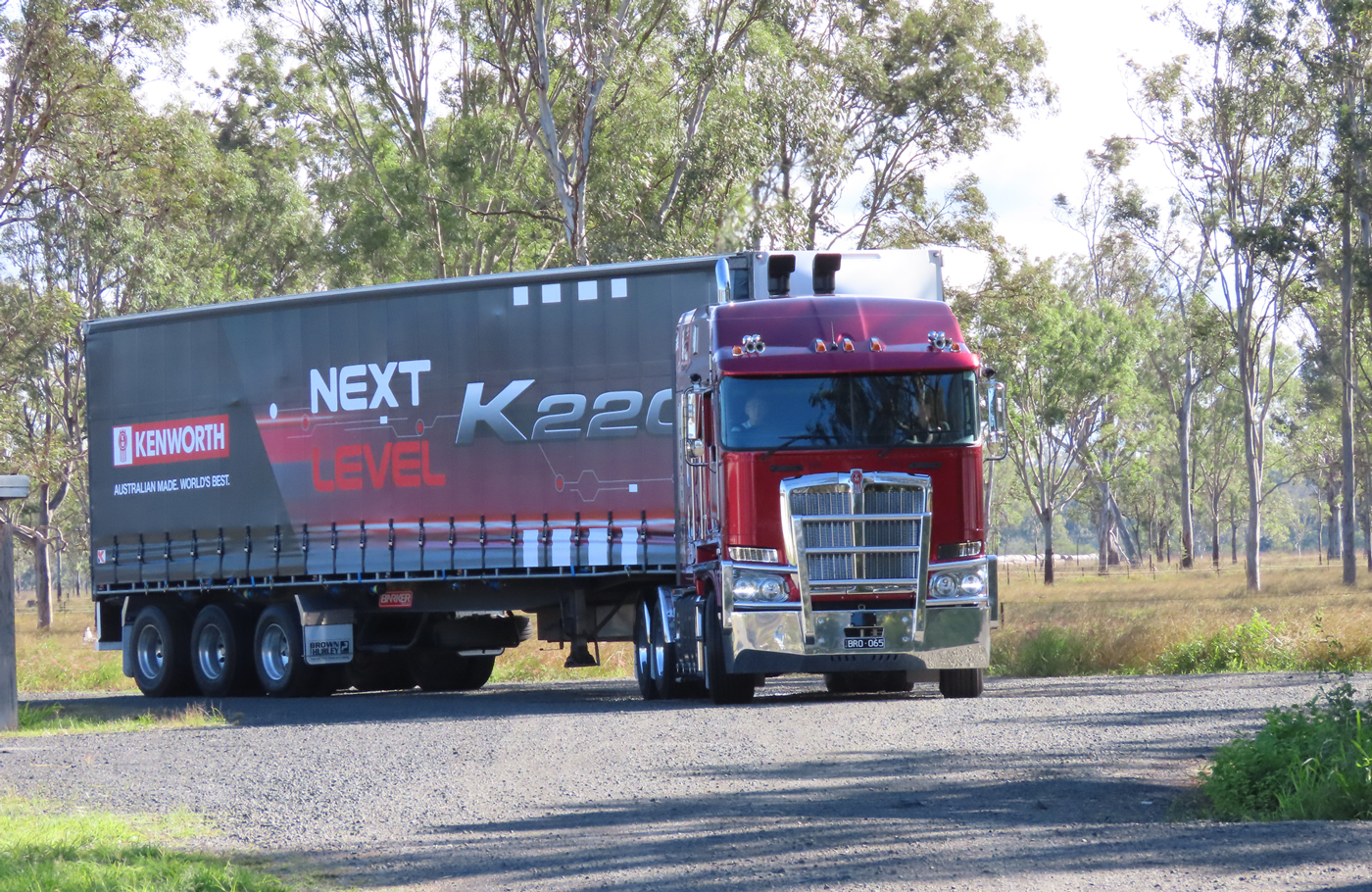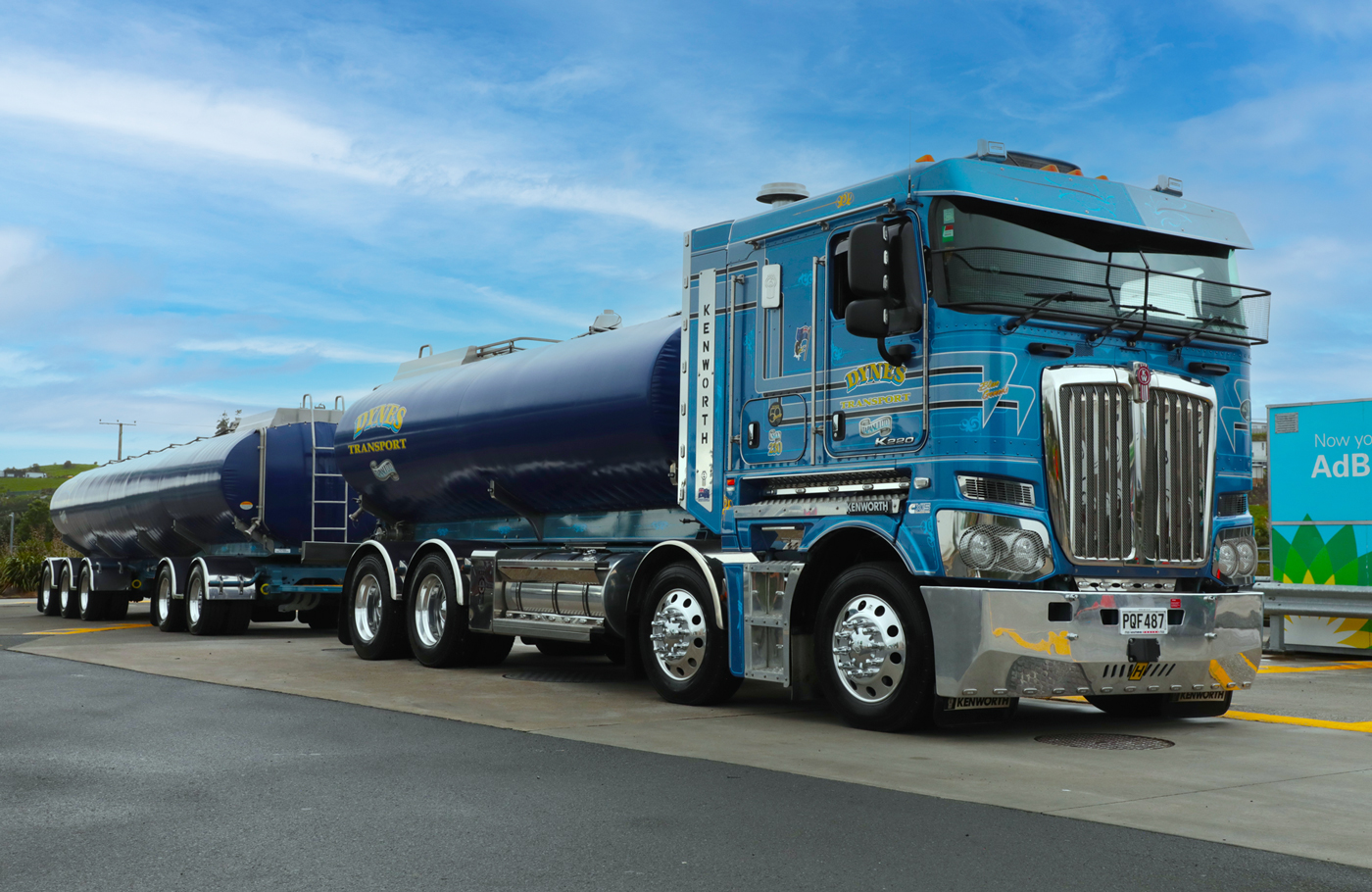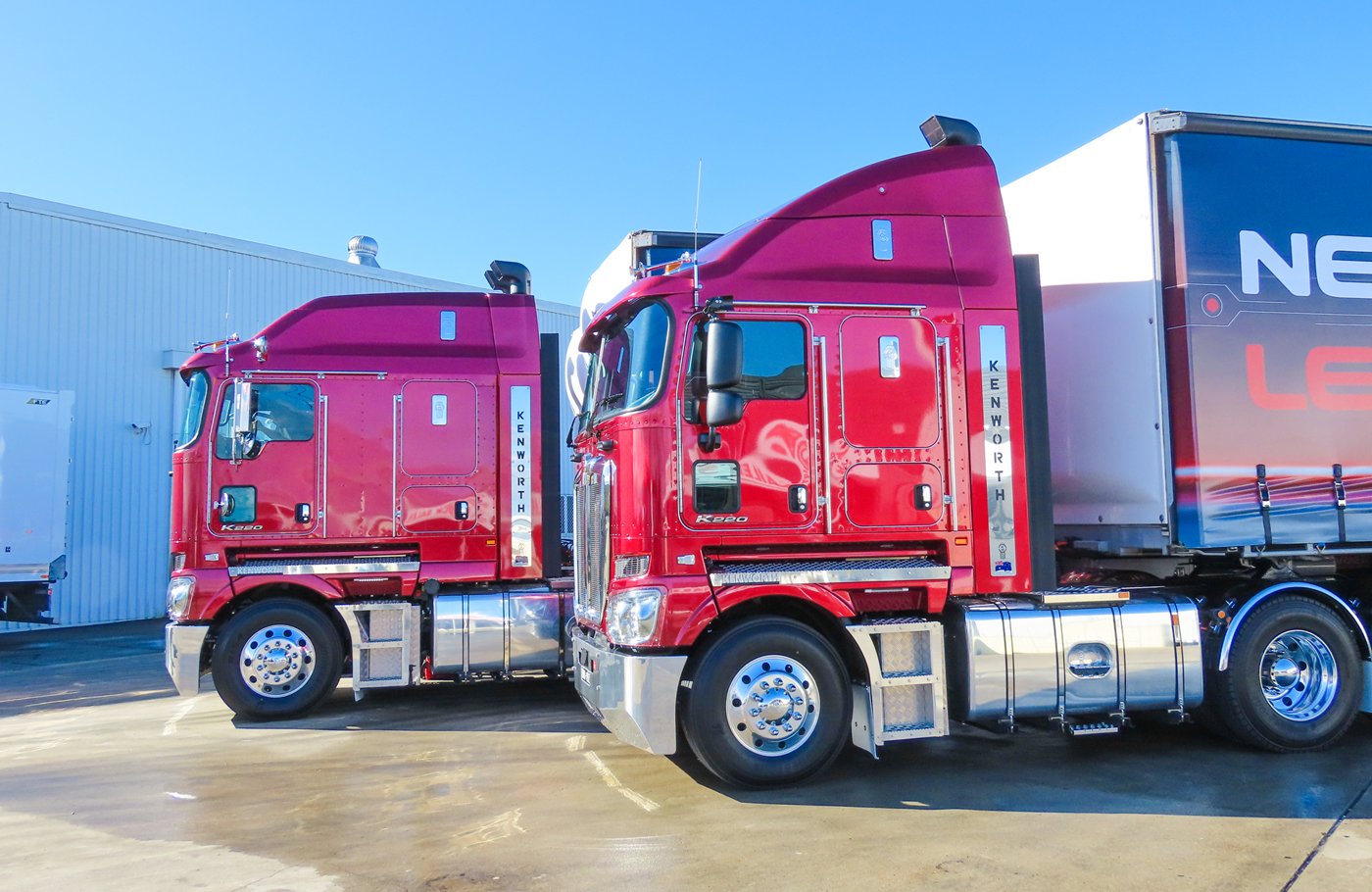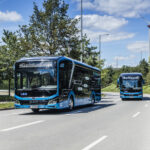Revealed: why the K220 won
Revealed: why the K220 won
Had Mike Tyson continually reinvented himself and kept in shape, he might have been able to knock out Tyson Fury, even today. Kenworth’s K220 – winner of the inaugural Truck of the Year Australasia competition – is proof of this theory, says DAVE McCOID. He believes that, in the K220, Kenworth now has a truck relevant to all aspects of the global competition.
Regardless of where you stand, Kenworth’s K model must surely stand shoulder-to-shoulder with the likes of Porsche’s 911 in the automotive hall of fame, as one of the great and enduring design successes of all time. Beyond bulk-head doors with piano hinges and a bolted frame, the K220 bears no resemblance to the original K100, yet it’s instantly recognisable as a descendant – and this is a truck whose design and manufacture has swapped continents.
What PACCAR does exceptionally well is to create a brand and build an aesthetic the market wants and relates to, in a product that lasts. It also has the innate ability to bring you on a journey, retaining just enough of the magic recipe to keep you interested (as it did with the T610).
You know you’re close to the bull’s eye when everyone else starts their conversation with, “It’s just as good as…”, or “It’s better than…”, or on the negative side, by listing the supposed attributes in theirs by highlighting the faults with yours.
The K220 is no glorified K200. It is a new truck sporting over 100 changes to the K200. Top of the list is the looming ADR mandatory AEB requirement in 2025, resulting in the K220 inching closer to platform, featuring multiplex wiring architecture that brings with it the many things a central CAN bus delivers.
The new 15-inch digital dash layout is spectacular and, although my initial thoughts on the gauges in the wrap were negative, driving the truck resolved that. It’s like your grandad’s favourite Stein on the mantle. It’s a superb example of how Kenworth keeps you connected while surreptitiously heading off in a new direction. How it has delivered a digital dash with ribbon gauges – of all things – dominating the view and not made me dry-retch I’ll never know… but it has. I loved it, and I loved the clock-face tacho and numerical digital speedo. After one day, I didn’t want to go back. The smart wheel has more going on than the previous one, but because it aligns better to the common layout and vibe, I found it easier to use… not that I’m a huge fan, even this far down their evolutionary path.



The wrap is now a T610 looking cross-over in appearance with the same heater gauges and big easy toggle buttons. The demisters and heater now demist and heat. There’s an infotainment screen, albeit a dinky one, and plenty of room for additional comms in various forms. There’s enough woodgrain to pacify and a non-slip rubber mat in the dash-top caddy – that will be great.
Access around the cab is fine. Is it the best? No, probably not, until you remember how many buy them. What defines best? The cab shell is largely still the cab shell, although it’s more slippery, and strides have been made in the Aerodyne, which improves room, storage, and insulation via the bold decision to eliminate the iconic vista windows. In fact, you’re now not allowed to call it an Aerodyne: “No, naughty!” This is an Aerodynamic Roof Sleeper.
There are all the traditional things that touch on that original “don’t remove the reason they buy it” mantra, like deep button vinyl in a range of colours, none of which are called oxblood…
Fit and finish are both an improvement on the K200, and the big yucky left-side bolted plastic fascia panel has been replaced with a nicer woodgrain setup. Is the K220 in the league of Europe’s finest when it comes to fasteners and panel gaps? No, as a rule you don’t see boltheads in Europe’s elite. If the Euros actually did close the competition gap in many of Kenworth’s key markets, those panel gaps might close too.
Of course, the elephant in the room with the K model shed is always access, and in this area I’m a little harder to convince of its overarching negative. You always have three points of contact and bear your weight on your feet. I’ve carried many a bag and coffee into a K model and never once felt on the brink of having my will read in a solicitor’s office. The other thing a “rear of the wheel” entry means is your truck will easily comply with New Zealand’s HPMV 62 tonne permitting because the first to ninth axle length requirement will easily be met (i.e. the front axle is, as the name implies, in the front). The side lockers, meanwhile, are huge and again maybe a smidge too high for the vertically challenged driver.
As customisable as Kenworths are, engine make is no longer part of that. The Cummins X-15 engine, in its various Euro 5 and 6 guises, with power from 485 to 625hp, are it. Euro 6 uses SCR and EGR with driver select on the burn-off if needs be. Behind that things get exciting. My truck had the Eaton UltraSHIFT Plus and it reminded me how much I dislike UltraSHIFT Plus. Luckily, I’ve driven Endurant twice, and that shifter takes Eaton’s AMT offering from the Flintstones to the Jetsons.
One thing Kenworth has historically done superbly is bring vendor components together into a harmonious entity. The Cummins ADEPT and Endurant combo make for a power union akin to Will and Kate in the Kenworth chassis.
The challenge will be making an ever more complex truck while retaining the brand’s key attribute – the one that got it to where it is today – the fact that you can disappear into the wilderness with more than one trailer and know it will come home. Time will tell how that goes.
Speaking to the drive, Kenworth has retained everything that makes its truck a Kenworth. In saying that, not everyone finds it to be their cup of tea, especially in a rapidly aging driver population in both countries. However, its stability on the road and the confidence it induces when you point and shoot are without peer. It will be interesting to assess how those attributes are retained in a fully suspended cab when I get to sample that. Sadly, my target truck has one but wasn’t ready in time – bloody bodybuilders!
Buyers will need no convincing regarding the K220. The assumption that this truck will drag a B-Train from Brisbane to Melbourne, a triple from Adelaide to Darwin, a trailer/B-Train from Auckland to Christchurch, logs out of the wilderness through swollen creeks, or cattle out of the rural backblocks of both nations is already a given. Two things have ensured this: firstly, the constant evolution of a chassis that works, and secondly, the yardstick support structures in both countries. How to make an incredibly robust and locally designed and built truck an outrageous success over many decades is by supporting it outrageously well.
I think it was fortuitous – maybe even karma – that our inaugural Truck of the Year Australasia coincided with the debut of the K220. It is a testament to local design, engineering skills, and talent that amidst some of the world’s best it did our region proud with an entirely relevant truck – one that still ticks both the boxes of desire and, hopefully, delivery. Where PACCAR’s venerable premium cab-over heads from here will be electrifying… an absolute gas!
Truck of the Year Australasia unpacked
Based on the International Truck of the Year rules, the annual Truck of the Year Australasia (ToYA) award is presented to the truck introduced into the Australasian market in the past year, which has made the most significant contribution to road transport safety and efficiency. This judgement relies on several critical criteria, including technological innovation, comfort, safety, driveability, fuel economy, environmental footprint, and total cost of ownership.
The four contenders for the award – Kenworth’s K220, the Fuso Shogun 510, MAN’s New Truck Generation, and the Iveco S-Way – were praised by the judges for raising the bar on safety and efficiency for the trucking industry in both Australia and New Zealand. All four trucks have demonstrated their contribution to improving the standards of safety and efficiency of transport of goods by road in Australasia.
The Kenworth emerged triumphant largely because it’s a real game changer. “The Kenworth K220 is a massive step change for the Kenworth brand here in Australasia,” explains Tim Giles, editor of PowerTorque Magazine and 2023 chair of the ToYA jury. “The K Series has been with us for a long time, evolving time after time, but both the K200 and definitely the K220 have seen complete transformations of a classic truck design. There is a load of innovations in this truck, too many to list here, but multiplex wiring, sophisticated electronics, and the Eaton Endurant XD AMT stood out for the jury.”
Giles says the new award is truly significant. “Creating a Truck of the Year Australasia award gives us a chance to display to the world all of the things which are so great about trucks and trucking in Australia and New Zealand,” he notes. “The panel of judges includes me, plus Dave McCoid, editorial director of Trucking NZ; Charleen Clarke, editorial director of FOCUS in South Africa; Bob Woodward, who has worked in the trucking industry for his entire career, both for Finemores and the Australian Trucking Association; and Randolf Kovich, Editor of Deals on Wheels in New Zealand.”
The Truck of the Year Australasia is going to be an annual award, with the presentation alternating annually between Australia and New Zealand.
This year’s Truck of the Year Australasia award was presented to Damian Smethurst, recently appointed managing director of Paccar Australia, at the opening of the Brisbane Truck Show in Brisbane, Australia.
“I am proud to accept the inaugural Truck of the Year Australasia award on behalf of PACCAR Australia. This award also belongs to our valued customers who, as a result of close collaboration with our product planners and engineering teams, represent such an integral part of our product development projects,” said Smethurst. Congrats, Kenworth!
Published by
Dave McCoid
focusmagsa






